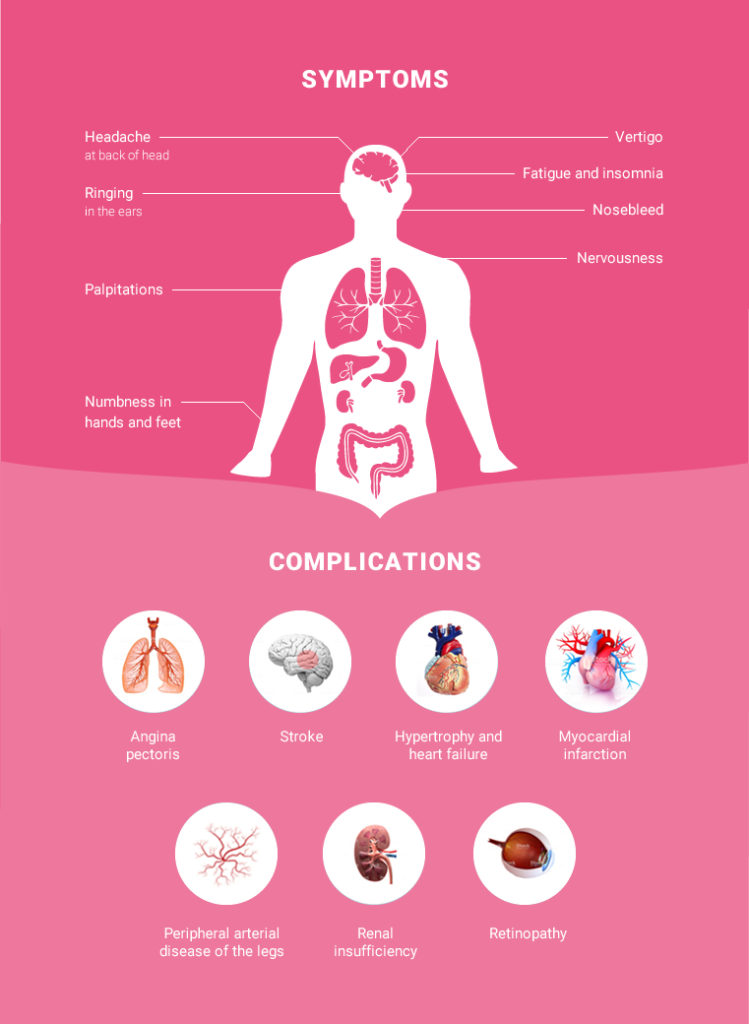Hypertension is a chronic disease characterized by high blood pressure. It is one of the main risk factors for cardiovascular disease. Ever on the rise, it is now one of the leading causes of premature death worldwide according to the World Health Organization1. However, when detected at an early stage and treated appropriately, hypertension is a condition that can be controlled very well.
Understanding your blood pressure readings
When the doctor takes your blood pressure, the numbers measured indicate the pressure when the heart contracts and when the heart relaxes. They are expressed in millimeters of mercury and must not exceed 140 for the top number and 90 for the bottom number. When your reading is 120/80, it means that your blood pressure is within normal limits and all is well.
1.28
An estimated 1.28 billion adults aged 30–79 years worldwide have hypertension1
1 in 5
Approximately 1 in 5 adults (21%) with hypertension have it under control1
A silent killer
No warning signs
Patients with high blood pressure may notably experience dizziness, headaches, palpitations (see infographic below), but this is rarely the case. Hypertension often has no symptoms, which is why it is called the “silent killer.” Measuring blood pressure may therefore be the only indicator of this condition, so it is important to have your blood pressure checked regularly by a health care professional.
Screening is a quick and painless process and you get the results immediately.
You can also take your blood pressure in a pharmacy, or on your own using a portable blood pressure monitor and discuss the readings with your doctor.

What are the risk factors?
Although there is no apparent cause of hypertension, several factors increase the risk, such as a diet too rich in salt, fat or sugar, lack of physical activity, stress, smoking, excessive alcohol consumption, being overweight, etc. By changing our lifestyle, we take action directly to lower our blood pressure.
However, some factors cannot be controlled, such as:
The combination of these factors reduces the efficiency of blood circulation and makes the heart muscle work harder. The excessive pressure on the heart weakens the arteries, making them stiff and promoting the appearance of atheromatous plaques (cholesterol build-up on the artery walls). A hypertensive patient has fragile arteries and a heart that is fatigued.

And Servier?
We are the 2nd leading global pharmaceutical group in hypertension and the 5th in cardiology3. For over 60 years, we have been committed to addressing cardiovascular diseases, including hypertension.
As the profiles of hypertensive patients are quite varied, we are working on more personalized solutions to better meet the need for improved treatment compliance. For example, we are capitalizing on our expertise in cardiometabolism through a strategy of incremental innovation, with the development of Single Pill Combinations, or treatments that combine several active ingredients in a single tablet.
We also fully support this day and also join in on the May Measure Month screening initiative organized by the International Society of Hypertension (ISH). For the past seven years, we have committed to improving hypertension screening through our #BecauseISaySo global awareness campaign. Its purpose is to give patients the information and tools they need to make checking their blood pressure a regular habit.
Finally, our MyHealthPartner website is dedicated to patients suffering from hypertension. It provides a wealth of information on chronic diseases and helps patients better understand their condition, associated risk factors, and symptoms.
REMEMBER
[1] World Health Organization – WHO Report 2023 « Global report on Hypertension. The race against a silent killer » et https://www.who.int/fr/news-room/fact-sheets/detail/hypertension
[2] Ameli – avril 2024 (https://www.ameli.fr/assure/sante/themes/hypertension-arterielle-hta/definition-facteurs-favorisants)
[3] IQVIA, Analytics Link / World 75 countries – MAT Q4-2023

